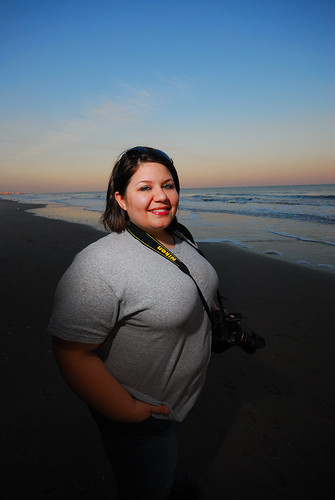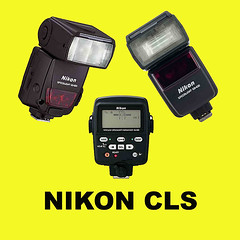 The portrait at left was lit entirely with a pop-up flash! O.K. not really, but it was the most important piece of the puzzle. For those of us using bodies with a pop-up flash I would hazard to guess that 99.99% of us set the pop-up to "--" and never look back. Why do we do that? We were taught that 1)the pop-up flash is a worthless underpowered auto mode users crutch and 2) on camera flash is to be avoided like the plague. So what happens when you run out of remote flash units? Most of us do not own an unlimited supply of speedlights. I would dare guess that most readers own an average of 2 speedlights. Because let's face it they are not the cheapest things in the world of photography.
The portrait at left was lit entirely with a pop-up flash! O.K. not really, but it was the most important piece of the puzzle. For those of us using bodies with a pop-up flash I would hazard to guess that 99.99% of us set the pop-up to "--" and never look back. Why do we do that? We were taught that 1)the pop-up flash is a worthless underpowered auto mode users crutch and 2) on camera flash is to be avoided like the plague. So what happens when you run out of remote flash units? Most of us do not own an unlimited supply of speedlights. I would dare guess that most readers own an average of 2 speedlights. Because let's face it they are not the cheapest things in the world of photography.Let's take a look at the picture. The first thing is to notice that I shot at 1/200 at f/8 in order to bring down the ambient daylight in order to get the nice blue sky (Saturation was bumped a bit in post). So as we know that leaves us with a mostly dark subject. The main light is coming from camera right, in front of the subject and just a little higher, from a SB600 on 1/8 with no modifiers. The fill is camera left slightly behind the subject via unmodified SB600 at 1/16. So here is the problem. I only owned two SB600s at the time, and while the subject was mostly lit the bottom of his boot and the front chrome were way under exposed. What to do?
Now you see it, huh? I set the pop-up flash on my D80 which was commanding the two SB600s to manual at 1/16. I couldn't even tell you how low of a power that actually is. I mean think your pop-up flash has a GN of something like 30. So 1/16 is pretty weak, but it works perfect here. It lit the bottom of the boot showing the tough tread and Harley logo. It also had the added effect of putting some catch lights on that nice polished chrome!
A theme which I will be repeating not just in this blog, but in the group discussions as well: "Know how to use all of your tools."
When your back is against the wall you will know where to reach.







